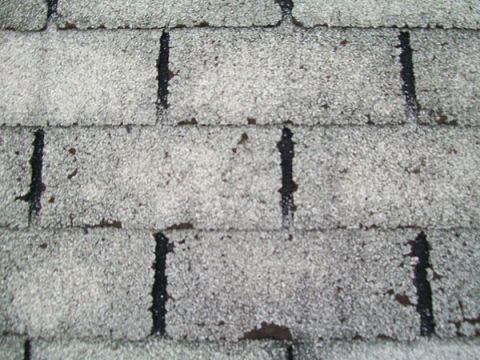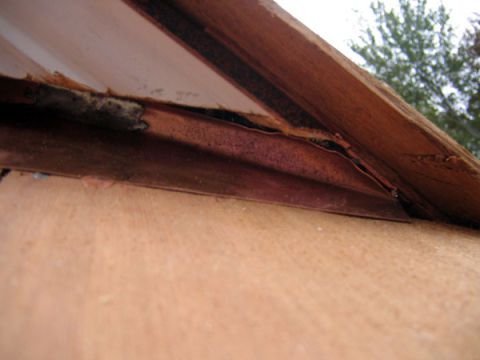Missing shingles, granules filling the gutters, water stains on the ceiling after rainstorms—they all point to roofing problems. Pay attention to these warning signs and act before the problem gets worse and more expensive to fix.
1. Problem: Water Spots on your Ceiling

What the Roof is Trying to Tell You: The roof has a leak, which can be tricky to pinpoint. “A slow leak is harder to find than a big leak,” says Joan Crowe, director of technical services for the National Roofing Contractors Association (NRCA). “If it’s just a couple of drips, it can be hard to find.”
What can make a leak especially difficult to locate is the fact that water doesn’t necessarily drip straight down. It can travel along roof panels or lumber in the attic before dripping onto your insulation and leaving the telltale yellow water spot on your ceiling. That means the leak can be far away from where the ceiling shows damage. Unless you have good detective skills when it comes to roof leaks, you’ll want to enlist a roofing contractor to help track down the cause of the problem.
Crowe points out that water spots on the ceiling don’t automatically mean the roof is leaking. “It could be caused by windows, condensation, plumbing, or even condensation on the plumbing pipes,” she says. However, if the spots only appear, darken, or grow in size after it rains, the roof is likely the culprit.
2.Problem: Water Spots Appear on Exterior Walls

What the Roof is Trying to Tell You: The step flashing where the roof meets a wall is loose, rusted, or otherwise damaged.
As with water spots on the ceilings, if the damage appears or gets worse after rain, the problem is most likely the flashing. Replacing step flashing can be tough, because it has to integrate with the roof and adjacent siding, so roofing skills are needed to tackle this job and stop the leak. One other possibility: Crowe says places where two different siding materials butt together and leave gaps or leaky windows could also be to blame.
3. Problem: Your Gutters are Filled with Granules and Wash out the Downspouts

What the Roof is Trying to Tell You: The shingles are deteriorating or reaching the end of their lifespan.
“Granules do come off, and they do collect in the gutters,” Crowe says, adding that some loose granules are not necessarily a cause for concern. However, if you suddenly notice a lot of the granules flowing out of the downspouts every time it rains, the next step is to get on a ladder and examine the shingles to see if they look “exposed” because most of the granules are gone.
Granules protect against the sun’s UV rays, so once they’re gone, the shingles can become brittle. In extreme cases, shingles can have smooth or bald spots where all of the granules have completely fallen off.
Losing the granules often means the shingles are old. “The shingles are aging,” Crowe says. “They’re near the end of their service life.” And that means you’ll need to replace them. Before you start the project yourself or call a pro to get a quote, Crowe recommends calling the manufacture to see if the shingles are still under warranty.
4. Problem: Cracking Shingles

What the Roof is Trying to Tell You: The granules have probably worn off, allowing the shingles to become brittle. They probably need to be replaced.
Another symptom of the same disease. Perhaps you didn’t notice the granules washing away, but if you see signs of cracking in your shingles, then it probably means they are being exposed to direct sunlight and are wearing out. “The shingles are approaching the end of their service life,” Crowe says. “Asphalt shingles don’t like heat.”
Again, check whether your shingles are warrantied, especially if they’re not supposed to be near the end of their lifespan but you’re seeing cracks nonetheless.


